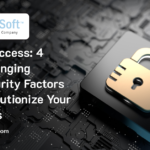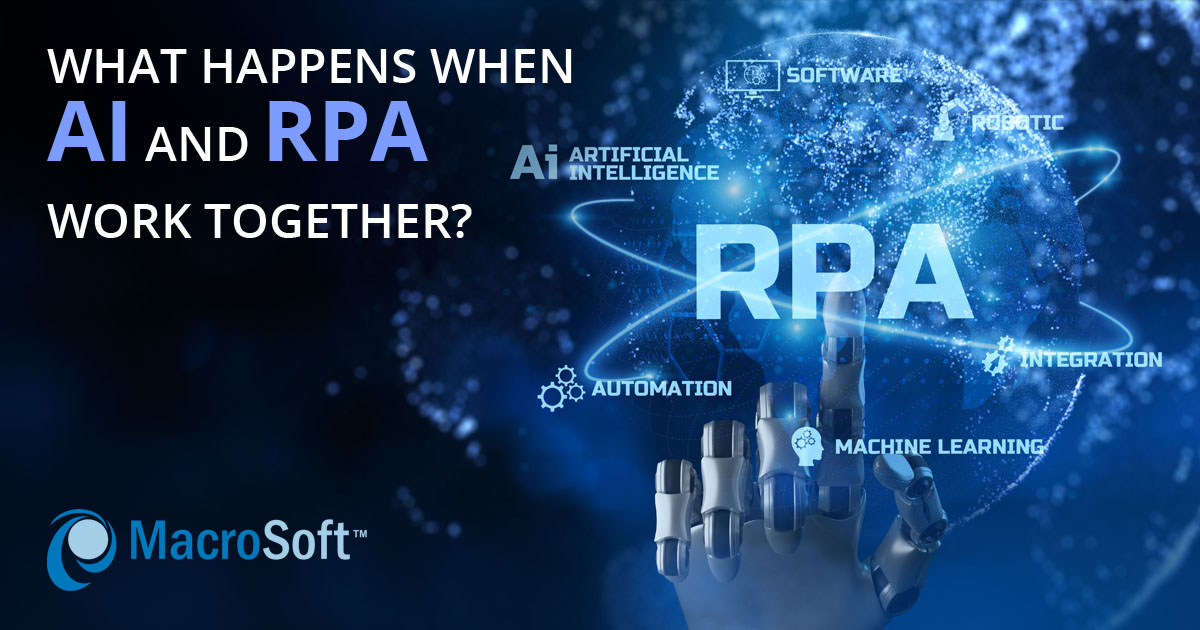

WHAT ARE AI AND RPA?
The study of systems that behave in ways that to a human observer appear intelligent is known as artificial intelligence. It is a technique used to solve simple or complex problems that are internal to more complex systems. To handle complex issues, AI uses techniques inspired by the intelligent behavior of humans and other animals.
Robotic Process Automation is automation software that handles tedious, manual digital tasks, and transfers the work of a human worker to a digital worker. RPA is the use of computer software robots to complete routine, rule-based operations including entering the same information more than once, copying and pasting data, and filling out forms with the same information. By enabling employees to concentrate on work that is mission-critical, RPA solutions increase productivity while saving businesses time and money.
RPA vs AI
RPA is used to work with people by automating repetitive processes, AI is viewed as a form of technology to replace human labor and automate end to end. RPA employs organized inputs and reasoning, whereas AI generates its logic from unstructured inputs. Intelligent automation uses artificial intelligence technologies including machine learning, natural language processing, structured data interaction, and intelligent document processing, whereas RPA frequently focuses on automating repetitive and frequently rules-based procedures.
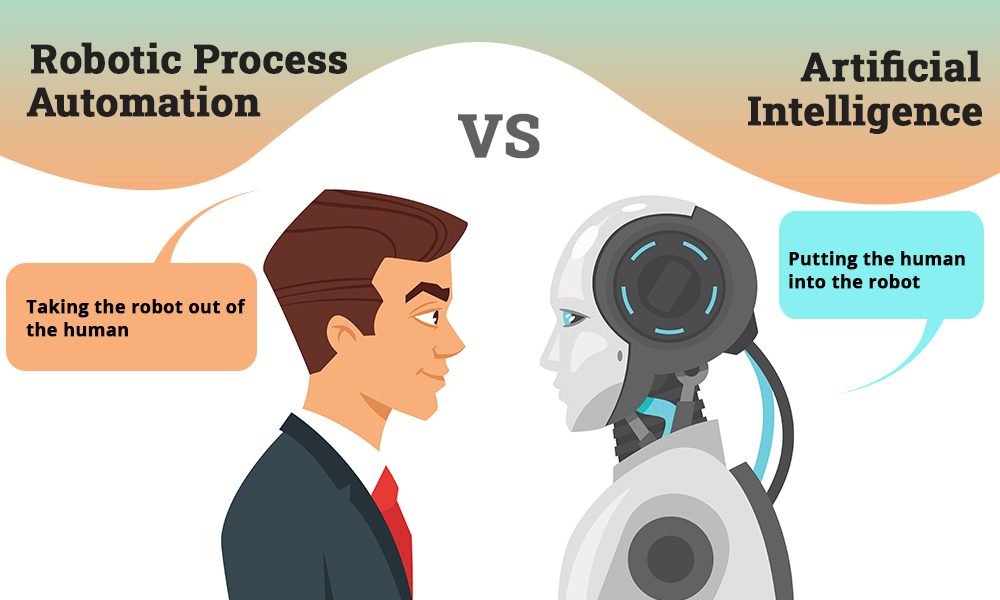

WHAT HAPPENS WHEN AI AND RPA WORK TOGETHER?
Artificial Intelligence and Robotic Process Automation are two different technologies, but they have a lot in common. RPA is only doing what the programmer tells, on the other hand an AI can teach itself. While AI is used to deal with insights from semi-structured and unstructured data in text, scanned documents, webpages, and pdfs, RPA interacts with structured data. AI can convert the data to a structured form for RPA to understand. That is RPA can automate the rule-based tasks and AI can fill the gap where RPA falls. The RPA tool “Automation Anywhere” allows the bot to self-learn through the IQ bots. By integrating the RPA techniques with AI, the bot can perform tasks such as recognizing unstructured data, learning from human feedback, etc.… Therefore, the two technologies can support each other. The togetherness of these two technologies can eliminate human errors in the workplace and can make sure to reach correct results. Also, improve data management effectively and save cost and time. Converging AI and RPA will enable your business to automate more complex and help the humans work faster and smarter than before.
BENEFITS OF RPA & AI
Reduce operational risks by the human that are mundane are usually subjected to errors than when performed by software robots. RPA and AI help to reduce human errors in operations.
Reduce data entry errors. Correct recording of the data is very important and at the same time is a laborious task. The combination of RPA&AI helps in automating data recording, and data entry and ensures it is without errors
Quick Response has enabled the delivery of rapid services to customers 24*7 as well as performing the tasks within a few minutes which earlier consumed hours and days.
Better and faster. The togetherness of RPA & AI has enabled systematic and quick operations in the front, middle and back offices. It makes for faster service delivery.
Improved customer experience. The combination of RPA and AI has helped the organization to fasten the operation with a minimum error rate and error-free service to customers. The leading customers demand 24*7 instant service and quick response, which makes it easier with RPA and AI.
Improved internal operation. Attendance tracking, record maintenance, timely submission of internal reports, and onboarding of new employees and others can be automated within the organization with the help of the togetherness of RPA and AI for smooth functioning.
Increase output. RPA & ai works 24*7 without any variation in the service quality as per the customer demands. Therefore, RPA and AI are the perfect solutions to increase output.
Better security. The virtual workforce assures security as there is no risk of an employee changing role or leaving the company and lowers the risk of data hacking.
Scalability. RPA and AI are scalable technology such that you can scale up or down the operation based on the requirements of the customer or organization.
Increase Accuracy. The main feature of RPA and AI is accurate and error-free service. So, it helped to eliminate the processing error to optimize business processes and map accurate business strategies.
Improve Analytical Abilities. RPA and AI can gather quality data points that enhance the analytical abilities of the organization thus delivering better business forecasts.
WHY DOES MACROSOFT PROPOSE RPA & AI?
Robotic process automation and artificial intelligence have revolutionized the way business works. Companies in all sorts of industries or markets utilize RPA to automate tasks that require little or no involvement of human beings. Before on a mission to incorporate RPA in business, see which processes can be automated to give the most benefits. Brainstorm with the right RPA partner to figure out the impact of robotic process automation on people, procedures, and policies. Macrosoft prefers AI builders. If you are betting on AI in the future, you must go with Microsoft AI builder the Microsoft power platform capability that provides AI models that are designed to optimize your business processes. Your company may apply intelligence to automate procedures and draw conclusions from data using power apps and power automation thanks to AI builder. This leads your business to success. We offer end-to-end RPA & AI services with strategy planning, deployment, and support. Our experienced team helps to automate and well-organize the business processes which have translated into enhancing productivity and efficiency.
By Santhosh Kumar | August 24th, 2022 | Process Automation
Recent Blogs
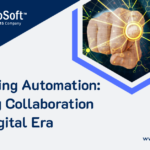

Humanizing Automation: Fostering Collaboration in the Digital Era
Read Blog

Advantages of Technology and IT Companies Partnering with Staffing Firms Offering Visa Sponsorship
Read Blog

CCM in the Cloud: The Advantages of Cloud-Based Customer Communication Management
Read Blog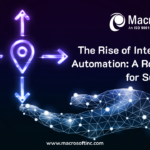


 Home
Home Services
Services











